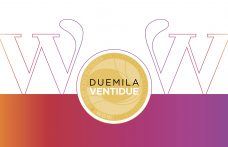
Angelo Gaja comments on the Italian wine industry. The interview

On an international level there may be someone else, but in Italy there is only one person who can make himself and his winery the talk of the town, both in newspapers and online, whenever he wants, without paying a penny for publicity and they even thank him for it: the wine producer, Angelo Gaja.
The method he has invented is very simple: he writes a short text explaining his opinion about a different problem relevant to wine and emails it to all the journalists he knows. And seeing that his texts are always written with an ironic frankness and his ideas are never banal, the journalists receiving his messages then report the most important parts; some even publish them as they are. And so why not ask him a few more exacting questions? This is how the interview started.
What do you think is the most important challenge facing Italian wine today?
“While Italian producers are the only ones creating a demand on foreign markets for Nero d’Avola, Primitivo, Aglianico, Montepulciano, Ribolla, Arneis and a few hundred other native varieties, New World producers, together with other Europeans and France’s blessing, are all contributing to create a demand and addiction to the taste of Cabernet, Merlot, Chardonnay and a few other varieties. With these, the United States, Chile, Australia, Argentina, New Zealand, South Africa, Israel and Canada first of all educated and satisfied the domestic market and then attacked foreign markets. In China, a country destined to rise to one of the top positions as a wine producer, 50% of vineyards are already planted with Cabernet. This means that for the Italian wine industry, exports will not be a walk in the park.”
But will Italian wine be able to cope? And how?
“Italy already enjoys a good, recognised and consolidated track record in the production of ‘food-wines’, i.e. wines to drink with food (it shouldn’t be a surprise, but there are still producers who don’t know this!). Wineries will not only have to dedicate more energy to introducing Italian wines to restaurants serving Italian food abroad, but also to ethnic ones (of the foreign countries themselves). And so make the restaurant business an excellent tool for spreading Italian wines. The younger generation of producers to emerge are finally speaking English: the working language which, if you know it well, allows you a better understanding of foreign markets and you can adapt your supply accordingly.”
In fact, at the moment Italian wine is undoubtedly enjoying great success in the world.
Is everything that glitters gold? Is competitiveness with other wine-producing countries effective or determined by the price factor?
“Every Italian region has a different history and culture. This is also true for wine. It might be useful to try and understand what each region’s key to success is on foreign markets. For the Veneto it is definitely Prosecco. For still wines, Tuscany will have a more open and favourable way to exports in the future, because it has known how to combine traditional wines with those made from Cabernet and Merlot (though still with very high quality), seeing that it wouldn’t have made sense to make banal ones. The general consensus is that they should be banned from our territories in favour of the exclusiveness of our native varieties: it is a vision that rewards national pride but is a poor marketing strategy.”
See also ...



Alto Adige meets Alsace at the home of Gewürztraminer
Gewürztraminer in Alto Adige and Alsace: a focus on the differences in terroir, Read more

